|
You finally won the battle of wills with your cat, transitioned him to a raw diet, and all of the sudden you prepare his meal with a whole bunch of love and care only for him to sniff it and turn around – What a slap on your face you think! What happened? It’s the same food he was devouring yesterday!
Cats! You think… Raw food made my cat sick!... Hunger strike! You think... He’s Just super finicky, or he’s playing a game on me! Or he doesn’t like the food anymore… You are at a loss. There are several possibilities to consider when a cat stops eating, especially when transitioning to a raw diet: The first, and the most important thing to do is to rule out illness.
Prior to transitioning to a raw diet, most pet parents are accustomed to feeding their cats the same food meal after meal, sometimes for years, and their cats never get bored – so they naturally think it will be the same way with raw. It is no coincidence that kitty never gets tired of kibbles. Kibbles, and many canned foods are meticulously “engineered” to keep your kitties eating them, by being coated with fat, having chemicals and flavors added to it that are both irresistible and downright addictive. If that was not the case, pets would not eat processed foods. Transitioning your pet from kibbles or even canned to raw is the equivalent of transitioning an adult human, a lot of times even a senior citizen, who has only eaten highly processed foods from a can, package, or a bag his entire life to a healthy diet of salads, veggies, fruits and low fat meats. Not an easy task. It can take time, patience and perseverance…. But it’s absolutely the best thing you will ever do for your cat’s health, and a very rewarding experience for you too! Keeping in mind that the beginning can be difficult, and sometimes it will seem you are taking two steps back and one forward, always remember two key things: This is not a race, it’s a journey, and to never, EVER starve a kitty into a new diet. If kitty is not eating and you must take a step back in the transition, take a deep breath, take a step back, and move forward. There is nothing wrong with it – as long as you keep moving in the right direction and don’t give up, you will get there! With that said, now that you have taken that step, what can you do to keep your cats interested on raw? VARIETY. Variety is key in keeping your cats eating a raw diet long term. You should aim to have at least three proteins on your cats’ diet – that will provide them not only with a well-rounded nutritional profile, but will keep them from getting bored. Once you transition your cat to raw, immediately start using that protein as a base using the slow transition technique to add a second protein to the kitty’s diet. You can then use both proteins as a base to slowly introduce a third protein to the diet. When you have introduced all the proteins, you can switch them back and forth. How often should you rotate proteins? I personally rotate proteins at every meal – my cats never eat the same protein twice in a row. While EZComplete is considered almost a topper by most cats with the dried liver, GLM and yolk, variety is still essential in keeping my cats happy, and has yet to fail me in all these years. You can also rotate daily, or every few days, but in my experience the more often you rotate, the more successful you will be in keeping your cats anxious for the next meal, and licking their plates clean. Try a different texture - Many cats also get introduced to raw on ground meats, and stop eating... Then they are offed a chunk of meat and voila! That happened to our Food Fur Life Cats… Pretty much all of them! So if your cat is currently eating ground meat and no longer wants the food, try giving a little chunk of meat and see what happens. It might be time to take your kitchen scissors out of the drawer! Offer a plain meal - Also part of our variety, is once a week they get one or two completely plain meals – yep – no supplements, nothing! Meat only. That makes them love both the meat and EZComplete even more! Use healthy toppers - If you still have problems, and we all do from time to time, you can always rely on healthy toppers to entice your cat to eat. In my home, chicken is not a favorite for my cat Lucky, and I have to admit, she is a master manipulator (anyone here can relate to that?) – so from time to time I do rely on her favorite treat as a topper, which….. you guessed it – is Freeze Dried Chicken! I just lightly sprinkle it over her meal, and she licks her plate clean.
The Importance of a Routine
It’s also very important to note that cats are creatures of habit – that’s not a myth. Establishing a routine for them from the beginning is very important – from a feeding schedule, to their eating places, and even to their own plates. A set routine will impact your chances of success greatly. Before feeding raw, I had the hardest time to feed even half an ounce of wet food to any of my cats – I would have to crawl under the bed for one, spoon feed another on the top of the cat tree… Let alone the food had to be made into a slurry on a blender and warmed up just so, otherwise they would not even consider it! Think I am lying? Watch the video below of me spoon-feeding Bugsy! This was mainly due to two things - feeding kibbles along with wet, and having no routine.
One of the most valuable advice I have ever gotten, and I got MANY, was to establish a routine right off the bat when transitioning to raw – I believe that was essential for my cats being the happy carnivores they are today. I can easily see how important this is when anything breaks that routine – they go off food until their routine is back into place. If your cat suddenly quit eating, consider if anything has thrown his routine off.
Last, but not least, please consider your kitties’ situation when you transitioned them to raw. Lots of pet parents make that transition due to an illness, specially IBD… There is a reason why we recommend a slow transition – always. Especially on adult or older kitties, after years of eating an unappropriated diet, it can take time for their bodies to start digesting raw properly. EZComplete has both Enzymes and pancreas, which helps with digestion, but there are some kitties that make the transition with a digestive system already very compromised. These cats should be given an extra slow transition, always be on probiotics (we firmly believe probiotics are an essential part of the diet for all cats), and depending of the age or condition of the cat, they might have to start with a homemade cooked diet balanced with EZComplete, and slowly transitioned to raw. If you just transitioned to raw and feel your cat might have a tummy upset, your transition might have been be too fast. Take a step back, always follow your kitties pace, keeping a close eye on them. Summarizing, if your kitty suddenly stopped eating:
0 Comments
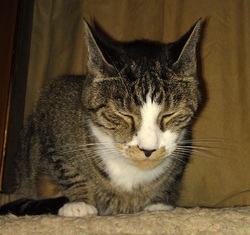
Why to Transition Slowly
If you introduce any new food too quickly, your cat may have diarrhea, constipation, vomit, or can even become lethargic due to GI distress. You’ll take your cat to the vet. If your vet is anti-raw, as so many are, they will blame the food. And they will be right – for the wrong reasons. This is not salmonella. This is kitty being transitioned too quickly. If you’ve fed your cat kibble, did you ever read the bag? The advice is to transition your cat to the new food over 7 to 10 days: mix just a small amount of the new food into the existing food, and slowly increase the amount of new food and reduce the old food by a like amount. Rapid transitions cause GI upset. This is no different. The process of introducing food made with EZcomplete, no matter how much your cat likes it, should be similar. While kitty enjoying the new food is wonderful, and makes the process much easier (!!), a transition that is too rapid will usually make your cat not feel well. Even if your cat is not new to raw feeding, your kitty may be new to some of the ingredients in EZcomplete fur Cats. The supplement contains New Zealand Green Lipped Mussel Powder – many cats have never had this before. The supplement contains plant-based enzymes – many cats have never been given enzymes before. If a cat is new to raw of home cooked, then almost ALL of the ingredients, including the raw or cooked meat, will be new (human grade meat is not the same as pet grade)! How to Transition Slowly The rule of thumb is very simple: Start small. Go Slow. Problems? Back up, slow down. With this in mind, do NOT start by making a big batch of food. Make just one meal. Store it in a baggie or container in the fridge. If you plan to give ground food to your kitty, use 1.5 ounces (43g) of ground (boneless) meat. Add one scoop of EZcomplete fur Cats and water to the consistency you want the food. If you plan to make chunked food, cut up 1.5 ounces (43g) of (boneless) meat into small slivers. Add one scoop of EZcomplete fur Cats and water to make the supplement stick to the meat. You can add more water when you serve it if you want there to be a bit of gravy. Make additional single meals with that same protein as needed during this transition. The First Meal(s) Start small, increase slowly day-by-day, NOT meal-by-meal. If there is any vomiting, back up, give a one or two day break, and start even smaller. If there is any diarrhea, back up, give a one or two day break, and start even smaller. If your kitty “meatloafs” in discomfort after a meal, or if your kitty is lethargic, or not acting normal in any way, back up, give a one or two day break, and start even smaller.
For Subsequent Meal(s)
Keep your eye on the litterbox and be aware of your cat’s behavior. If there is any vomiting or diarrhea, any signs of nausea, back up to the amount you last used before there was a problem. Stay there for two days, and then increase the amount of new food by one-quarter teaspoon, instead of one-half teaspoon. Day One Method 1: mix ONE-HALF teaspoon into your cat’s existing food. Method 2: place ONE-HALF teaspoon in the same dish as your cat’s existing food. You can reduce the amount of other food by one-half teaspoon. Feed just one-half teaspoon of the new food with existing meals for the first day. If you do not start in the morning, use that amount for all of the meals the following day. Day Two If kitty did well the first day with one-half teaspoon, increase the amount of new food from one-half teaspoon to one teaspoon at each meal. Days Three and Beyond Increase the amount of new food by one-half teaspoon each day (decreasing the old food by the same amount) – NOT each meal – until your kitty is eating meals that are 100% food made with EZcomplete. Again, use only one protein until they are eating 100% EZcomplete. If at any point your kitty has a reaction to the new food, back up, slow down. Again, make additional SINGLE meals as need. Continue to use the same protein until your kitty is eating 100% new food (EZcomplete). To Add a New Protein Use food made with that first protein and EZcomplete to introduce a second protein into the kitty’s diet. Repeat the process you just went through introducing food made with EZcomplete and the former meat/protein, but using food made with the second protein being introduced into the food your kitty is successfully eating at 100% with the first protein you just introduced. Follow the same process until your kitty is eating food made 100% with the second protein. Now you can rotate between those two. Use them to introduce (using the same, slow process) a third protein, &etc. For example: If you introduced Chicken with EZcomplete first, use that as a “Base” to introduce a second protein into the diet – let’s say you now want to introduce Pork + EZcomplete as the second protein. Once your cat is eating 100% Chicken + EZcomplete, that is the “old food,” and “Pork + EZcomplete” is now the new food, being introduced slowly. Simply follow the same guidelines explained above. Why not Start with Large Batches? Raw food is NOT at all like canned food. This is a minimally processed food, and it must be thought of as you would if you were transitioning yourself as an adult from never having ever eaten any fresh fruit or salad to a diet that is only fresh fruit or salad. Your body will most likely freak out if you switch all at once. You must give your GI system time to adjust to it. Imagine if you are a vegan and all of a sudden you eat an all-you-can-eat BBQ – how would you feel? Yes – you’ll feel like you ate a brick, and most likely quite sick! It is the same for our kitties, and if you transition too quickly, you simply have to expect problems – which is why we recommend a slow, controlled transition. You need to determine which protein your cat likes and does well with, in that small amount, before continuing. If you had been eating only all dry cereal or canned stew, if transitioning to an all fresh fruit diet, you may not do well with oranges or pineapple, but you may do well with apples. When you’re stable on apples, then you can try adding pear. The process with our cats and the new raw or homecooked food must be thought of in the same way. Start small. Go slow. Problems? Back up, slow down. This blog post has been added as an article in the How To section of the website. |
Archives
August 2021
Categories
All

|
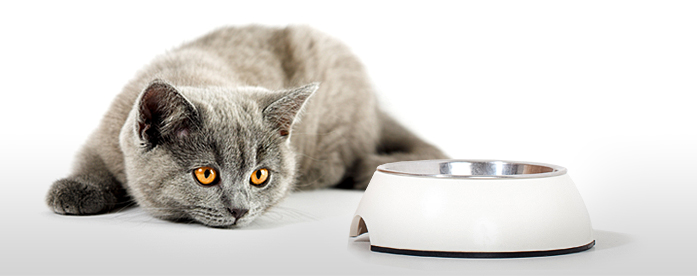
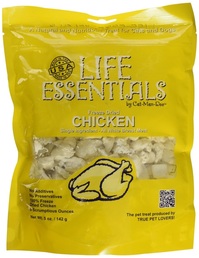
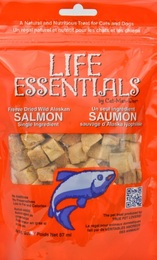

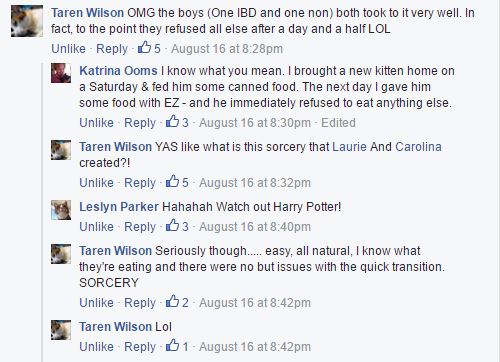
 RSS Feed
RSS Feed